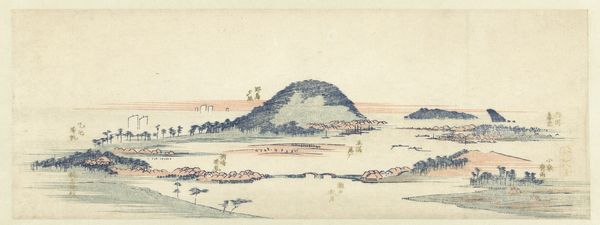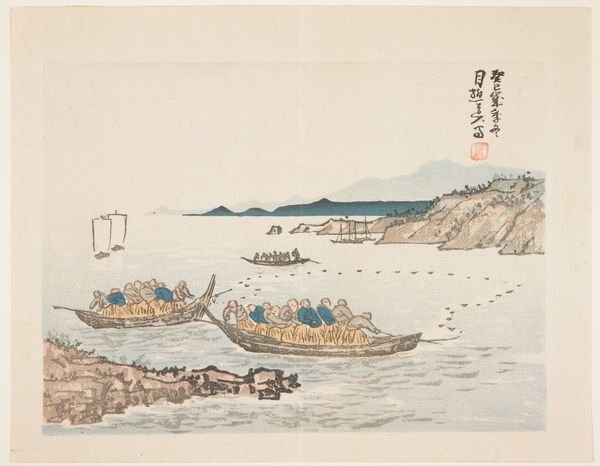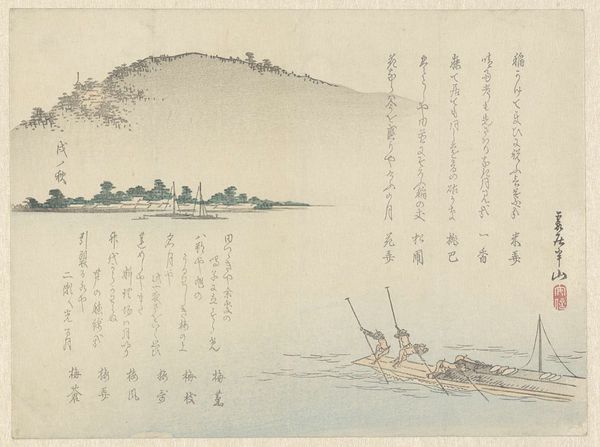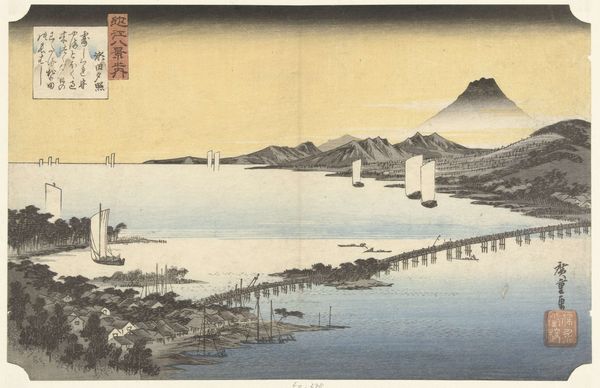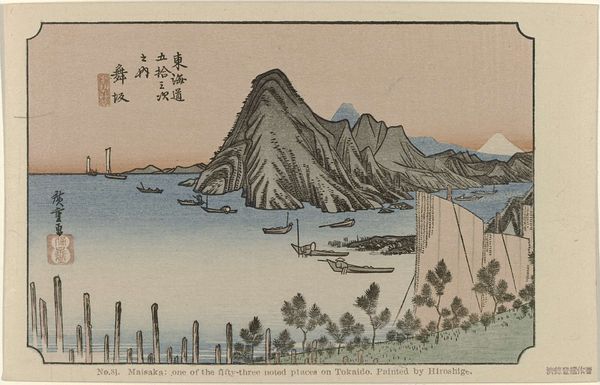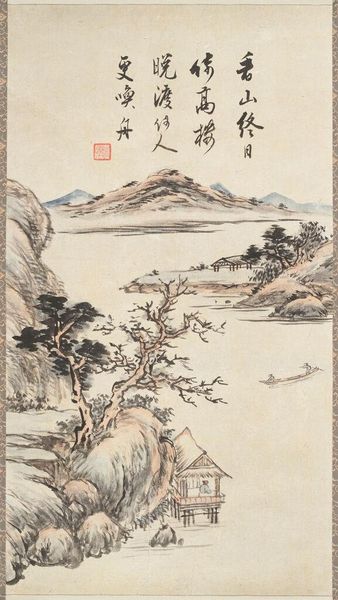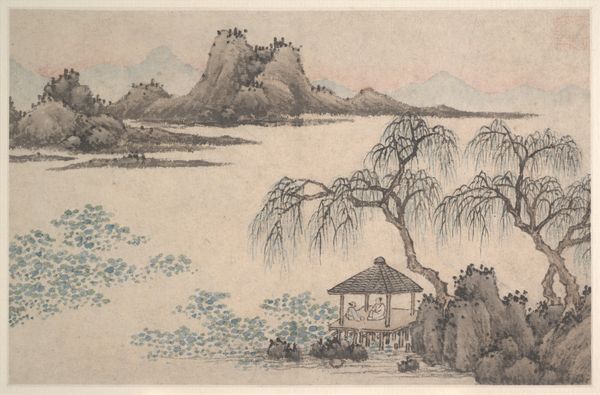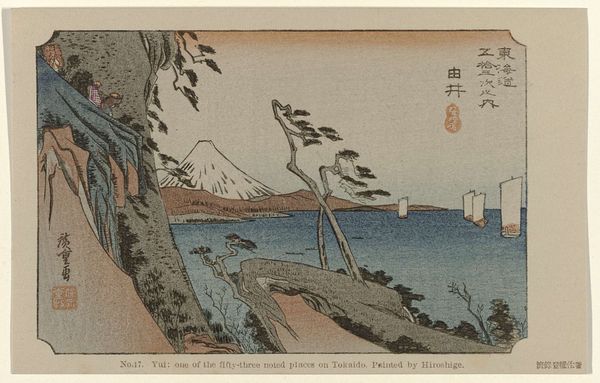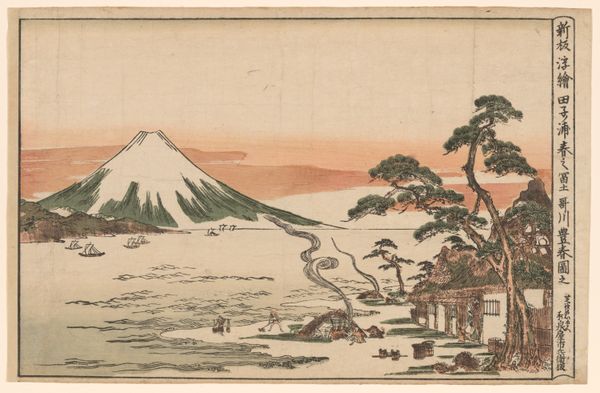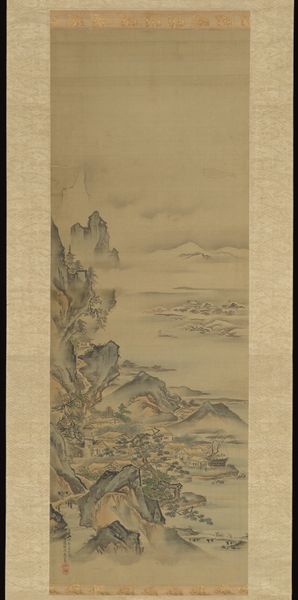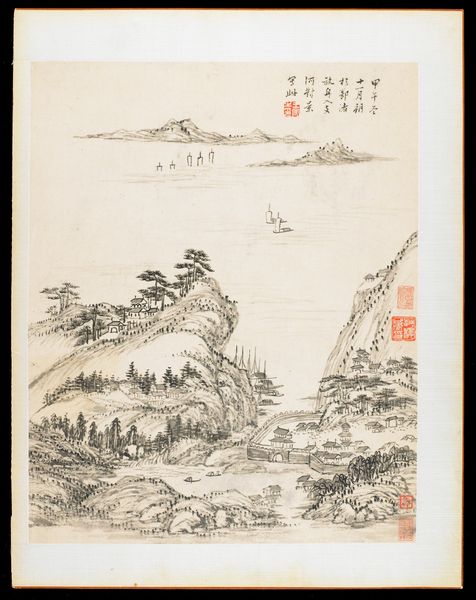
#
tree
#
light pencil work
#
quirky sketch
#
personal sketchbook
#
forest
#
ink drawing experimentation
#
coloured pencil
#
mountain
#
sketchbook drawing
#
watercolour bleed
#
watercolour illustration
#
sketchbook art
#
watercolor
Copyright: Public domain
Editor: So this is "View of Fuji" by Utagawa Hiroshige, likely a woodblock print. It has a very serene, almost melancholic feel with the solitary boat and the looming mountain in the background. How do you interpret this work, especially in the context of its time? Curator: The "View of Fuji" operates within a rich historical context. Consider the role of landscape prints in 19th-century Japan, specifically how they served not just as representations but as active participants in shaping national identity. Mount Fuji itself wasn’t merely a mountain; it was and remains a sacred site, deeply intertwined with Japanese spiritual and cultural narratives. How do you see the composition playing into that? Editor: Well, the mountain is very centered, but also distant, making it a goal or an ideal to strive for. It does seem to put nature and national identity together. Curator: Exactly. The composition isn't just aesthetically pleasing, it reinforces a specific power dynamic. These prints weren’t produced in a vacuum. Who had access to them? Who were they meant to inspire and what behaviours were they meant to encourage? Hiroshige’s work and the wider *ukiyo-e* tradition was revolutionary because it was available to the masses and not just the elite, thus speaking to the rising merchant class. What is your impression knowing that it had wide distribution at the time? Editor: That's really fascinating. So, while the image seems calm, it's subtly participating in social shifts! It is empowering for the rising middle class. Curator: Precisely! These images reflect and shape society's values and hierarchies. Even something as seemingly straightforward as a landscape print has the potential to carry significant ideological weight and challenge norms. How can this insight change our modern perspective, do you think? Editor: I think it shows how art is never truly neutral and reflects power and values. Curator: I agree. That makes me reflect on the continued power of art today.
Comments
No comments
Be the first to comment and join the conversation on the ultimate creative platform.

